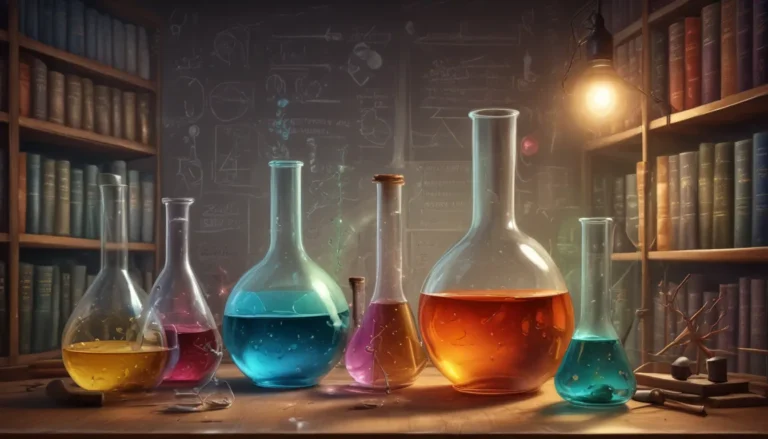A Note About Images: The images used in our articles are for illustration purposes only and may not exactly match the content. They are meant to engage readers, but the text should be relied upon for accurate information.
Welcome to the mesmerizing world of chemistry, where the periodic table reigns as a beacon of knowledge and discovery. Periodicity, the rhythmic cadence of elements’ properties, unveils a realm rich in patterns and insights. Join us as we unravel 18 extraordinary facts about periodicity that illuminate the secrets of the elements and their behavior.
Understanding the Foundation: Dmitri Mendeleev and the Periodic Table
In 1869, Dmitri Mendeleev crafted the first version of the periodic table, paving the way for a deeper understanding of elements’ behaviors. By recognizing recurring patterns among elements, Mendeleev structured a framework that organizes elements based on their properties, enabling scientists to predict their chemical interactions.
The Splendor of the Periodic Table: A Treasure Trove of Elements
The periodic table boasts an impressive array of 118 known elements, ranging from the familiar hydrogen to the elusive oganesson. Elements are grouped into periods (rows) and groups (columns), showcasing shared properties and behaviors among them.
Atomic Number: The Key to Order and Organization
At the heart of the modern periodic table lies the atomic number, representing the number of protons in an element’s nucleus. By arranging elements based on atomic number, the table provides a precise reflection of their properties, guiding scientists in their exploration of elements.
Unveiling Patterns: Recurring Trends in the Periodic Table
Discover the mesmerizing patterns within the periodic table. Elements within the same group often exhibit similar behaviors, such as valence electron configuration and reactivity. These recurring trends offer valuable insights into element properties and behavior.
The Majesty of Noble Gases and Transition Metals
Marvel at the noble gases, residing in Group 18, with their low reactivity and fully filled electron shells. Transition metals, found in Groups 3 to 12, dazzle with their ability to form multiple oxidation states and vivid compounds, adding a splash of color to the periodic table.
Delving Deeper: Predicting Element Properties with the Periodic Table
Embark on a journey of anticipation and prediction as you explore the periodic table. By studying an element’s position in the table, scientists can forecast characteristics like atomic radius, ionization energy, and electronegativity, unlocking a world of possibilities in chemistry.
Hydrogen: The Enigmatic Element
Behold the enigmatic nature of hydrogen, a unique element that defies categorization within a specific group. While hydrogen often graces Group 1, its properties set it apart from traditional alkali metals, adding a touch of mystery to the periodic table.
Navigating the Periods: Lanthanides and Actinides
Descend to the bottom of the periodic table to encounter the lanthanides and actinides, two series of elements displayed separately to maintain the table’s manageable width. Explore the depths of these elements’ properties and behaviors, uncovering their hidden complexities.
The Power of Prediction: Utilizing Periodicity in Chemical Reactions
Unlock the potential of the periodic table in predicting chemical reactions. By understanding periodic trends like electronegativity, scientists can forecast how elements will interact and form compounds, offering a glimpse into the dynamic world of chemistry.
Magnifying Electron Shells: A Window into Element Properties
Explore the symmetry of electron shells within the periodic table. Elements within the same period share the same number of electron shells, providing a clear pattern of behavior and properties across the table’s landscape.
Traversing Trends: Alkali Metals and Halogens
Witness the reactivity of alkali metals in Group 1, such as sodium and potassium, as they readily donate electrons to form positive ions. Delve into the high reactivity of halogens in Group 17, including fluorine and chlorine, as they eagerly accept electrons to complete their electron shells.
A Growing Legacy: The Expanding Horizons of the Periodic Table
As scientists continue to unveil new elements, the periodic table evolves to accommodate these discoveries. Each new addition expands our understanding of the building blocks of matter, underscoring the table’s role as a cornerstone of chemistry and scientific exploration.
Embracing the Periodic Table: A Pathway to Knowledge
Celebrate the enduring legacy of the periodic table as a vital tool in understanding chemistry. Whether predicting reactions, identifying trends, or studying elements’ behavior, the table remains an indispensable resource for chemists, educators, and curious minds alike.
Conclusion: Embracing the Marvels of Chemistry
In conclusion, the periodic table stands as a testament to human ingenuity and the limitless wonders of the scientific world. Its intricate organization and predictive power illuminate the secrets of elements and their behaviors, offering a gateway to discovery and understanding. As we embark on this journey through the periodic table, let us marvel at its complexity and revel in the endless possibilities it presents.
FAQs: Unveiling Periodicity’s Mysteries
-
What is periodicity in chemistry?
Periodicity in chemistry refers to the recurring patterns observed in elements’ properties as arranged in the periodic table, including atomic radius, ionization energy, and reactivity. -
How is the periodic table organized?
The periodic table is structured with rows called periods and columns called groups, allowing for the classification of elements based on shared properties. -
Who created the periodic table?
Dmitri Mendeleev, a Russian chemist, developed the modern periodic table in the late 19th century, revolutionizing our understanding of elements. -
How many elements are in the periodic table?
Currently, the periodic table contains 118 known elements, with new additions expanding our knowledge of the elements. -
Why is the periodic table important in chemistry?
The periodic table serves as a vital tool in organizing and understanding the elements, enabling predictions of properties and behaviors based on their position in the table.
Embrace the Beauty of Periodicity
As we unravel the extraordinary facts of periodicity, we invite you to delve deeper into the captivating world of chemistry. Explore the intricate patterns and behaviors of elements, unlock the secrets of the periodic table, and embark on a journey of discovery and wonder. Let the marvels of chemistry inspire you as you navigate the vast expanse of the periodic table, a true treasure trove of knowledge and exploration.






